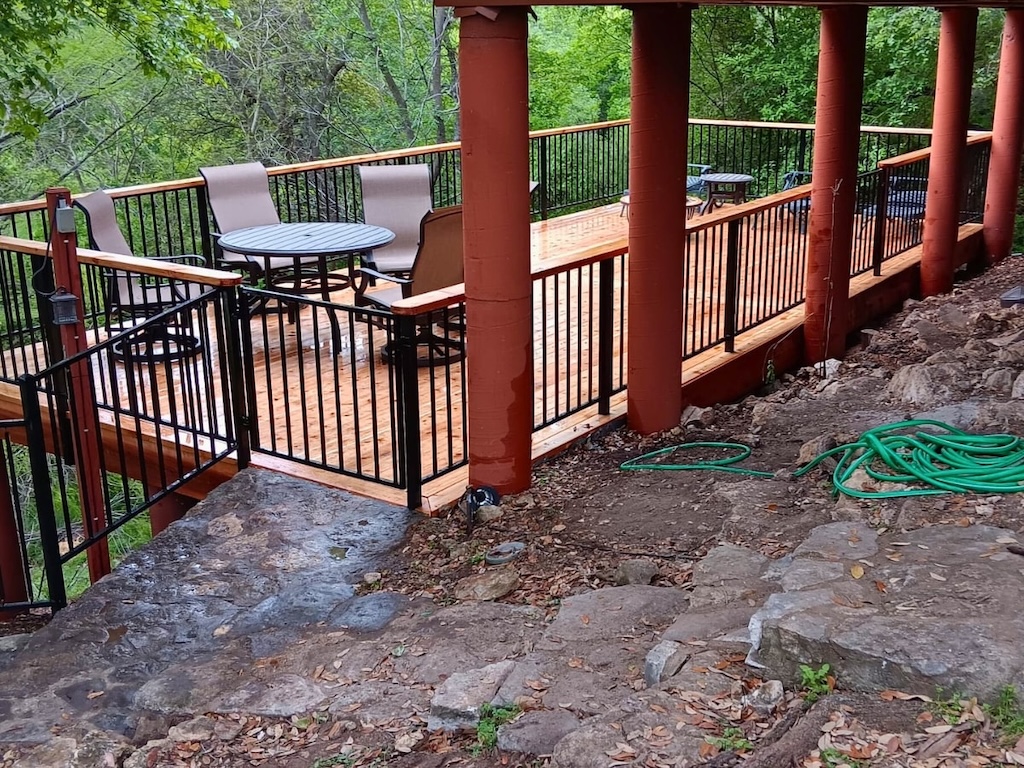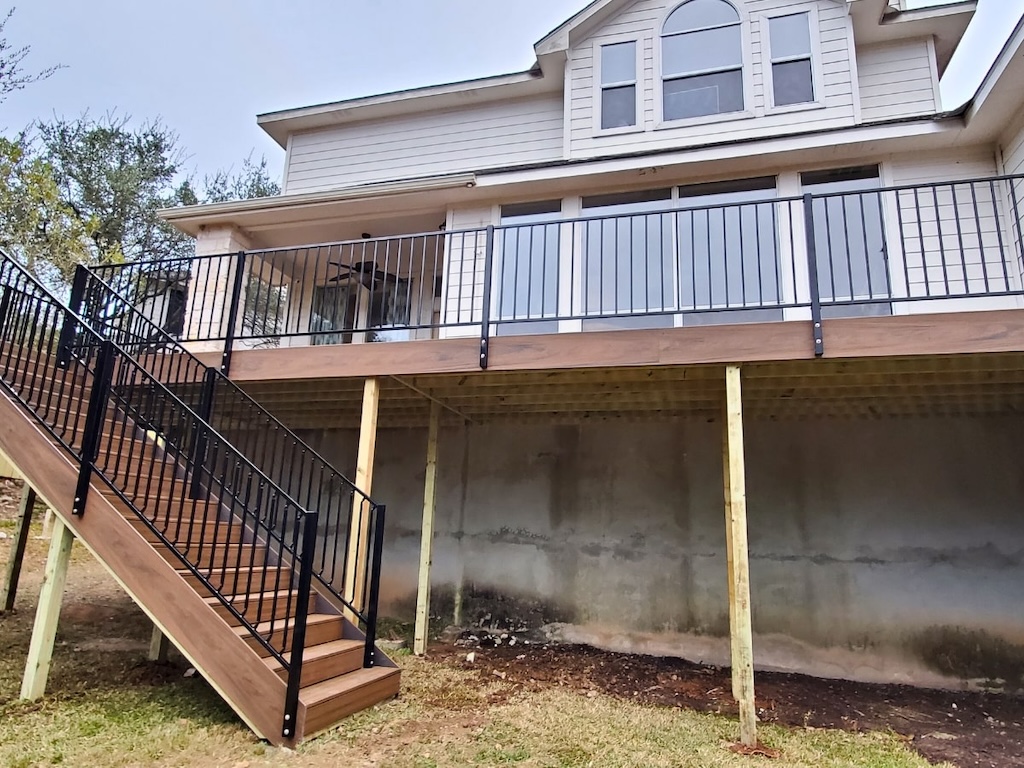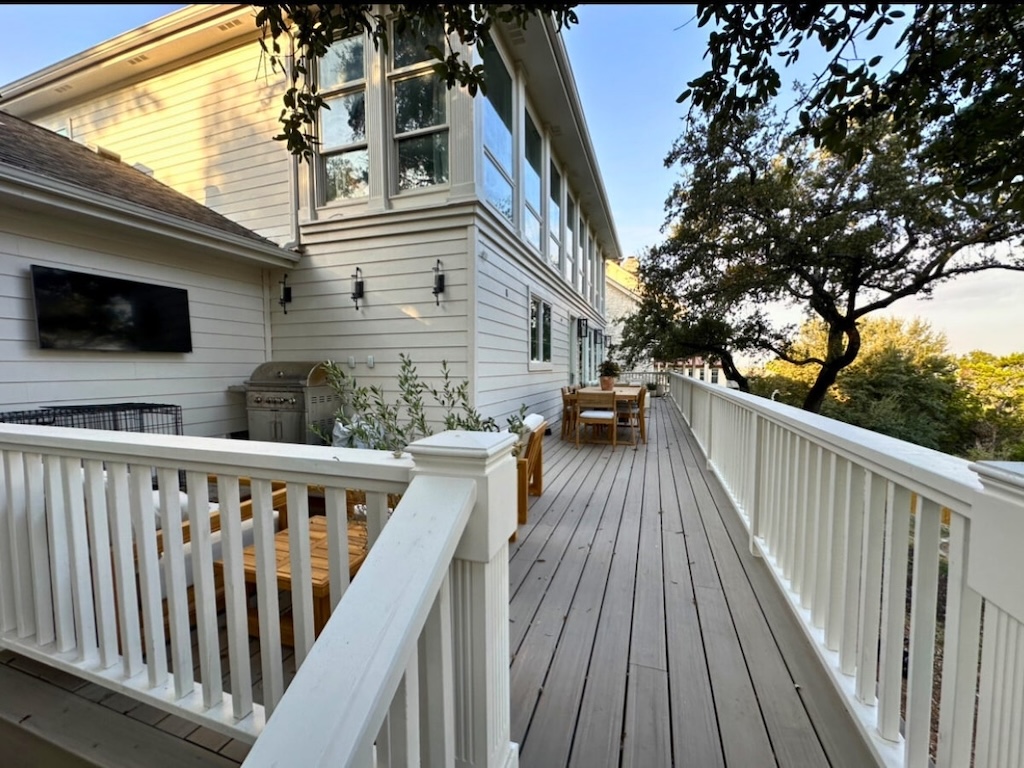TL;DR
A great Austin deck builder proves five things up front: (1) permitting know-how for Austin/nearby jurisdictions, (2) structural literacy (ledger, footings, spans, railings), (3) material guidance for Texas heat/UV, (4) documented scope with transparent pricing and change-order rules, and (5) schedule discipline with real inspection milestones. Ask to see a recent plan set, inspection tag, itemized estimate, and photos from local projects. Discover how we operate and what we build across the metro, including custom decks, by starting with Ace Deck Builders.
Table of Contents
ToggleAustin’s Realities: Heat, Permits, HOAs, and Soil

Austin isn’t an average climate or regulatory environment. “Great” here means a builder who designs and manages to Austin’s constraints:
- Heat/UV: Surfaces can run hotter than expected; darker boards spike in midsummer. Treads, fascia, and rail caps need thoughtful selection.
- Permitting & Inspections: City of Austin and nearby municipalities have specific submittal standards and common inspection “gotchas” (footings, ledgers, guard posts).
- HOAs: Many neighborhoods require pre-approval with color/material swatches and drawings; timelines should reflect HOA timing as well as city approvals.
- Soil & Drainage: Footing depth/diameter, corrosion resistance, and water management around posts drive long-term stability.
A builder who opens with these realities—and shows documentation from recent, nearby jobs—is already separating from the pack.
Credentials vs. Capability (What Actually Matters)
Licenses and insurance are necessary, not sufficient. A great builder proves capability with repeatable, documented systems:
- Insurance & COI: A current certificate of insurance that names you as certificate holder.
- Written process: Discovery → design/estimate → permitting → build → inspections → closeout.
- Artifacts: A plan set, recent inspection tags, a redacted invoice, and a closeout packet (care/cleaning, stain schedule, warranty contacts).
- Role clarity: Who drafts and submits permits? Who meets inspectors? Which scopes are self-performed vs. subcontracted (primarily electrical/gas for kitchens and lighting)?
During interviews, request these artifacts up front. The speed and clarity of the response are a preview of your project experience.
Structural Essentials: Ledger, Footings, Framing, Railings
Most deck failures are structural, not cosmetic. Your contractors should discuss the following in plain language and back it with details:
Ledger & Flashing
- Attachment pattern and fastener spec (not just “lagged into the house”).
- Proper flashing that protects the building envelope.
- Secondary moisture defenses (tape/membrane on critical interfaces where appropriate).
Footings
- Depth/diameter matched to soil and load; inspector sign-off before pour.
- Elevated post bases to avoid ground contact and wicking.
Framing
- Joist spacing and spans that match the selected decking (wood vs. composite standards differ).
- Blocking where rail posts, stairs, and landings attach.
- Ventilation under low decks to protect framing and reduce cupping/fade issues.
Railings
- Post connection that resists racking, correct guard height, safe stair rise/run, and graspable handrails.
Ask to see a detail sheet: ledger cross-section, joist hanger details, post base connection, stair stringer cut, and a railing post connection. A ten-minute review of that sheet reveals more than an hour of glossy photos.
Choosing Materials for Central Texas Sun & Storms
Materials are where comfort, maintenance, and aesthetics collide with budget.
Cedar & Other Softwoods
- Cooler underfoot; natural look; needs consistent stain/seal cycles (often 12–24 months based on exposure).
- Use corrosion-resistant fasteners; seal end cuts; mind grain orientation on stair treads.
Composite & PVC Boards
- Lower maintenance; strong color stability; some lines run hotter in direct sun—lighter tones help.
- Follow the manufacturer’s ventilation, gapping, and fastener rules, or warranties can be voided.
- Consider plug systems or hidden fasteners for clean appearance and barefoot comfort.
Hardwoods (e.g., Ipe)
- Dense, durable, and beautiful, but requires pre-drilling/quality fasteners. Additionally, seasonal color maintenance is necessary to avoid graying.
- Heavier loads may influence framing/footing assumptions.
A great builder brings sample boards and encourages you to leave them outside for a week to test heat, texture, and color at different times of day to ensure a beautiful deck. They’ll also forecast the actual 10-year cost (wash/stain cycles vs. up-front composite price).
For a deeper look at how professional construction unfolds—from drawings to permits to inspection milestones—browse our overview of deck installation in Austin to see process specifics in plain language.
Scope, Documentation & Price Transparency
Clear documentation prevents scope creep and cost surprises.

What a solid proposal includes
- Itemized line items: framing species/size, decking brand/series, railing type, lighting count, stairs, skirting, fascia details.
- Allowances: rock excavation, extra piers, disposal/haul-off, access protection, and hidden rot remediation.
- Exclusions: irrigation repair, landscaping replacement, furniture, grills—unless included.
- Warranty terms: workmanship coverage and manufacturer warranties (with what voids them).
Change-Order Rules
Develop a one-page written process that outlines who initiates, how pricing is calculated, and when work pauses pending approval.
Money Flow
Milestone-based schedules are healthiest: modest deposit → permit approval → material delivery → framing inspection pass → substantial completion. Heavy front-loading is a red flag.
If you’re weighing whether you need targeted fixes or a complete rebuild, it helps to understand the trade-offs. Our concise explainer on deck repair in Austin shows where structural triage makes sense and when replacement becomes more cost-effective.
And if you’re interviewing multiple firms, this quick primer—choosing a deck contractor—covers questions and proposal pitfalls to watch for.
Scheduling, Inspections & Communication
Time kills momentum—and trust—when it isn’t managed. A great builder provides:
- A Gantt-style timeline with buffer for weather and inspection calendars.
- Clearly marked hold points (e.g., “no decking until framing inspection passes”).
- Proactive weekly updates (even “no change” messages).
- A single point of contact who answers and resolves issues.
Inspections should feel routine: the site is prepped for the inspector (exposed connections, clean footing holes), and you get same-day pass/fail notes with next steps.
Jobsite Safety, Cleanliness & Neighbor Courtesy
Professionalism shows in the small things you’ll live with for weeks:
- Daily cleanup and swept paths; cord management; blade guards; dust control.
- Clear “no-go” zones for kids and pets.
- Protection for siding, windows, and landscaping.
- Respect for HOA noise windows and neighbor access.
No one leaves five stars for a messy, hazardous jobsite—no matter how pretty the photos.
Reviews, References & Photo Proof (How to Vet)
You’re looking for pattern consistency, not just a few flashy projects.
- Recent, local photos (last 6–12 months) with context: neighborhood, materials, challenges solved.
- References from homeowners with similar home styles or elevations.
- Before/after galleries with structural and finish details visible (not only wide glamour shots).
- Responses to negative reviews: Did the builder resolve issues professionally?
Red Flags: When to Walk Away
- “No permit needed” for a deck that clearly triggers one.
- A one-line quote with a single price.
- Dodging requests for a sample plan set, inspection tags, or a detail sheet.
- Large upfront payments before permits/materials.
- Refusal to define workmanship warranty in writing.
Homeowner Interview Checklist (Use This)
Print these and check them off during calls/site visits:

Credentials & Coverage
- COI is naming you as a certificate holder
- Responsible party for permits and inspections documented
Design & Scope
- Plan set and 3D view before contract
- Itemized proposal with allowances and exclusions
Structure
- Ledger flashing detail and fastener spec
- Footing depth/diameter and inspection milestones
- Joist spacing and span for your chosen material
- Railing post connection, height, and stair geometry
Materials
- Heat/UV discussion; sample boards you can test outside
- Fasteners/end-cut treatment and ventilation guidance
- Warranty terms and what could void them
Money & Time
- Sample itemized estimate and redacted invoice
- Written change-order process
- Gantt timeline with inspection hold points
Quality & Care
- Workmanship warranty + manufacturer warranties
- Cleanup standards and neighbor policies
- Closeout packet: care/cleaning, stain schedule, warranty contacts
FAQs
For a single-level 300–400 sq. ft. deck without complex add-ons, many projects are completed in 2–4 weeks once permits are in hand. Multi-level, rooftop, outdoor kitchens, or complex rail/stair packages can add time.
Lighter-tone composites/PVC or well-maintained cedar typically feel cooler than dark, dense boards. Shade planning (pergola, trees, orientation) often matters as much as the brand.
Low, simple decks may not require stamped drawings, but elevated decks, rooftop installations, or heavy loads (such as a spa or kitchen) may necessitate them. A great builder will flag when engineering is prudent or required.
Milestones. A modest deposit, then payments tied to permit approval, material delivery, inspection pass, and substantial completion. Avoid large front-loads before work begins.
Plan on 12–24 months, depending on exposure and product. Watch for water that no longer beads and for visible color fade.
Get Your Austin Deck Right the First Time (Free Estimate)
If you want a crystal-clear plan, price, and timeline for deck design —with permitting, inspections, and scheduling mapped out—we’ll put it all in writing and walk you through options in plain English. Start your project with a free deck estimate in Austin.
